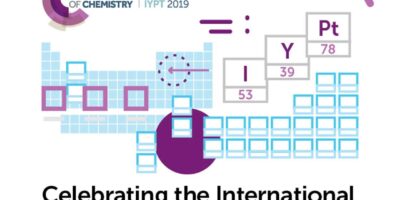I know, it’s not the official month for remembrance. But why shouldn’t we remember all year round? The truth is, there have been so many catastrophes in human history and they should all be learning opportunities rather than mistakes destined to be repeated.
Last Thursday was the thirtieth anniversary of the Challenger Space Shuttle Disaster, which killed all seven people aboard when it blew up 73 seconds after launch. NASA held a memorial service at Cape Canaveral, Florida, in honour of those who died on the fatal mission. Hundreds were in attendance, including relatives of astronauts and space workers killed on the job since NASA was founded in 1958.
President Barack Obama sent out a statement on Thursday saying, “We must never forget the courageous Americans who made the ultimate sacrifice to expand the boundaries of understanding. They knew the risks and still chose to put their lives on the line so that future generations could lead lives made better by advances in science, technology, and a deeper understanding of our universe and humanity’s place therein.” He also said that the United States has its current standing because of those who reached for “unbounded heights”.
The Challenger was a tragedy which was arguably inevitable. It raises many questions about the role of the engineer in upholding public safety, as well as questions about management, protocol, and decision-making processes. Because of the ambiguity of all of these questions, this situation has become the basis of many case studies in university engineering courses. Last week in my Ethics course, we handed in a study and then proceeded to debate this case to death, so I can contest to the truth of that first-hand.
NASA initiated its space shuttle program in the 1980s with the launch of the STS-1 on April 12, 1981. The goal of this program was to reduce the cost of accessing space by reusing vehicles, rather than discarding old shuttles and building new ones for each mission. They were designed to fly 100 times over a ten year span, although things did not proceed as planned. After each flight, the engine and other parts had to be rebuilt more than expected – the cost of launching averaged to half a billion dollars. Having previously committed to regular flights, NASA added more vehicles and had the crew working overtime to meet deadlines. This created a culture of “go fever”, which created a high pressure work environment and pretty much gave them the mindset of needing to deliver at all costs. Up until the Challenger incident, the system appeared to be working. They had flown twenty-four consecutive successful missions.
The Challenger Space Shuttle was part of this program and was about to have its tenth mission. Aboard were seven people, including civilian Christa McAuliffe. She was the selected candidate to take part in the Teacher in Space initiative, which was intended to increase student interest in STEM subjects, particularly space exploration.
The initial launch was scheduled for January 22, 1986, and was finally rescheduled to January 28 after five delays. The night before, a conference call took place between NASA and Morton Thiokol, the engineering firm contracted to design the solid rocket booster (SRB) for the space shuttles. One Thiokol engineer, Roger Boisjoly, was concerned about launching the next day because of the low predicted temperatures, but the lack of exhaustive data concerning the causal link between temperature and performance reduced their credibility. NASA management responded to concerns with “My God, Thiokol, when do you want me to launch – next April?” The majority of the officials recognized the possibility of failure but were able to overlook it when faced with a short time-frame, public expectation, and previous successes under their belt. This ended up being an issue of “go fever” and prioritizing productivity.
On January 28, 1986, NASA launched the Challenger from the Kennedy Space Centre in Cape Canaveral, Florida, with much of the American public viewing the event on live television. 73 seconds later, it blew up over the Atlantic Ocean, killing all aboard. The rubber O-rings sealing the rocket boosters were not fully functional at very low temperatures, as Thiokol had warned – they did not seal properly, causing hot gases to escape and ignite the external adjacent fuel tank.
“The whole country and the whole world were in shock when that happened, because that was the first time the United States had actually lost a space vehicle with crew on board,” said former NASA astronaut Leroy Chiao.
This led to the idea that flying was too dangerous and human life should not be put in jeopardy. The families of the victims disagreed, saying that they did not want the deaths to have been in vain. A couple months after the tragedy, they founded the non-profit Challenger Center for Space Science Education to increase student interest in STEM with hands-on experience. There is currently one Center in Canada, but the majority are in the U.S., and the program has reached an estimated 4.5 million children since its inception thirty years ago.
Many attribute this disaster primarily to complacency: NASA recognized a potential problem, but considering Challenger had launched nine times and returned safely nine times, they did not see a definite reason to assume something would go wrong on this tenth occasion. By this point, launches were so commonplace and disaster-free that they did not see a reason to worry.
Was this preventable? Mike Leinbach, a former NASA shuttle launch director, argues that accidents are inevitable. “Spaceflight is like any other big engineering system,” he said. “You get smart by successes. You get smart by failures. … It’s an evolution.”
President Ronald Reagan agreed. In his national address the evening of the disaster, he said, “It’s all part of the process of exploration and discovery. It’s all part of taking a chance and expanding man’s horizons. The future doesn’t belong to the faint-hearted; it belongs to the brave.”
The real question is, did NASA learn from their mistakes? They started by improving their design. It appears that the seven did not die from the initial explosion but rather from impact with the ocean. They may have survived if the shuttle was designed with an escape mechanism. NASA added this functionality for ejecting the crew capsule to their new shuttles. They also started to launch on top of rockets, rather than alongside them.
However, the root of the problem has more often been attributed to the culture over technical failure. We have discussed this idea of complacency. Was it eliminated?
Well, the same thing happened in 2003 with the Columbia, killing another seven people. A piece of foam punched a hole in the left wing, which allowed hot atmospheric gases to enter the wing after launch and destroy the vehicle. They had seen foam falling off earlier, but it hadn’t caused any major damage and therefore they didn’t expect catastrophic consequences. But again, complacency has no place in engineering.
Arguably, NASA did not learn from their mistakes.
NASA’s space shuttle program led to failures in two out of five shuttles, so they finally terminated the program in July 2011. Currently, their human spaceflight program is working on sending people to Mars in the 2030s, with the development of a capsule called Orion and a rocket called the Space Launch System.
The most important thing is to learn from these experiences. As the cliché goes, it is not a mistake until you fail to correct it. Remember, this is also Einstein’s definition of insanity, but we must remember that our duty as engineers is to protect public safety at all cost, even when engineering drives us insane. Therefore, let us keep this case in mind lest we become complacent again and forget the past.




Leave a Reply